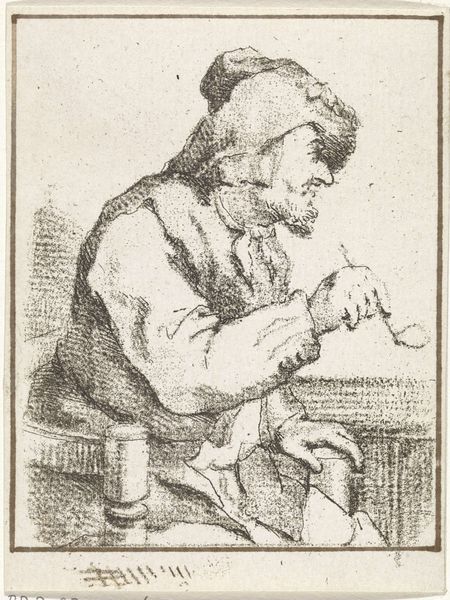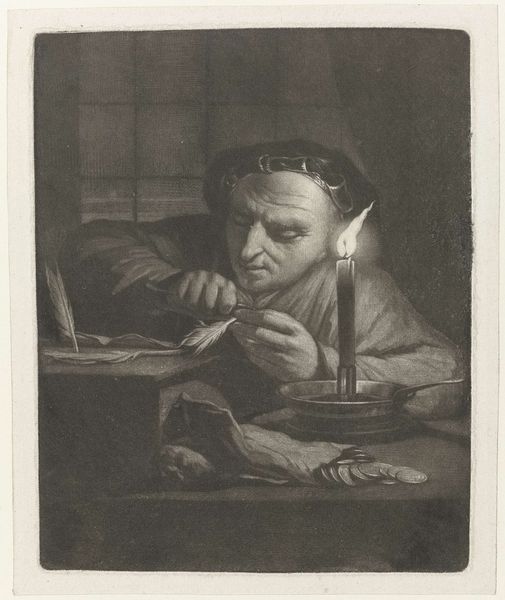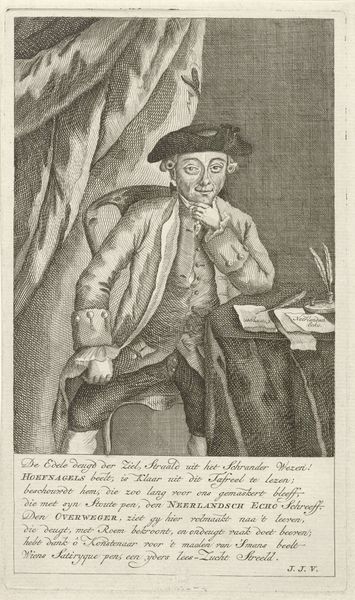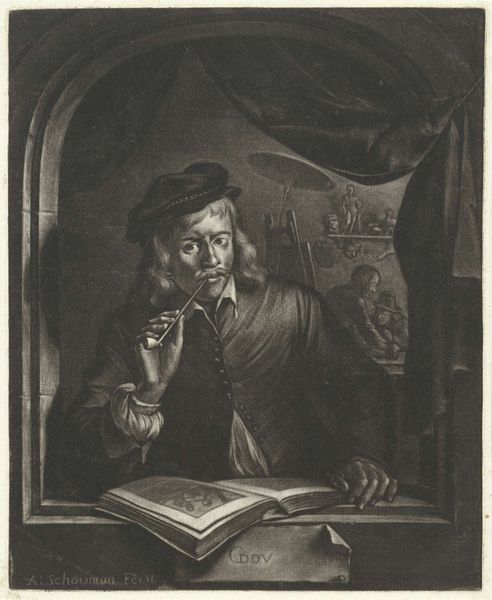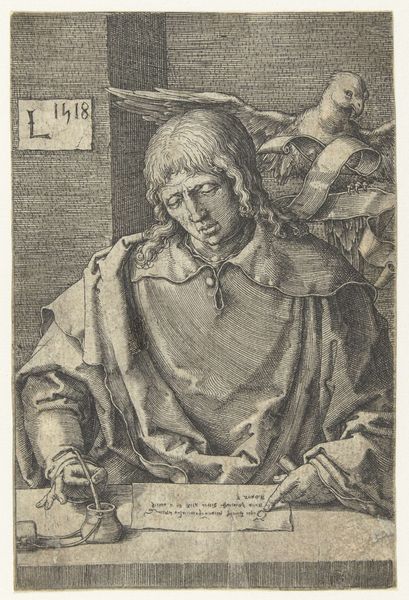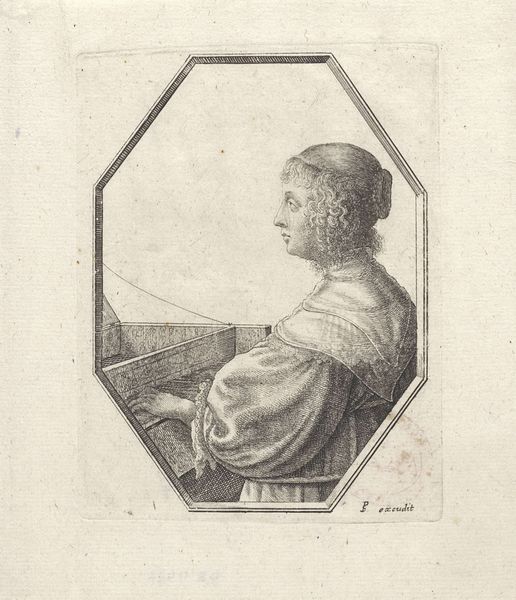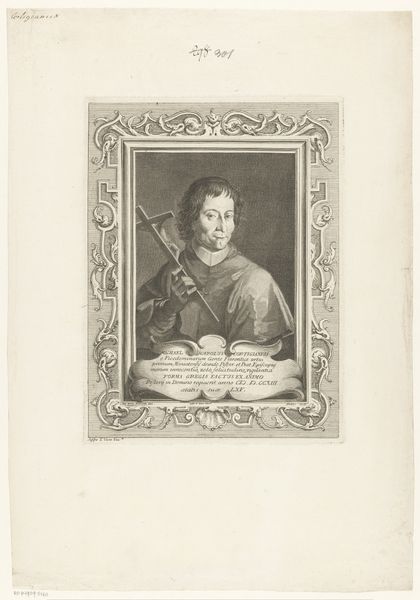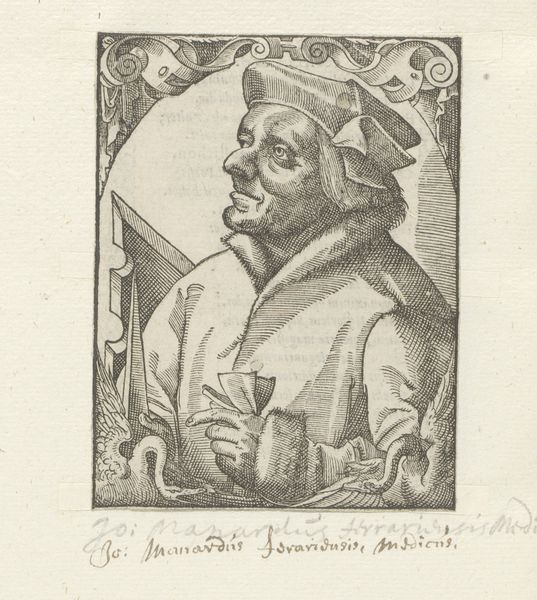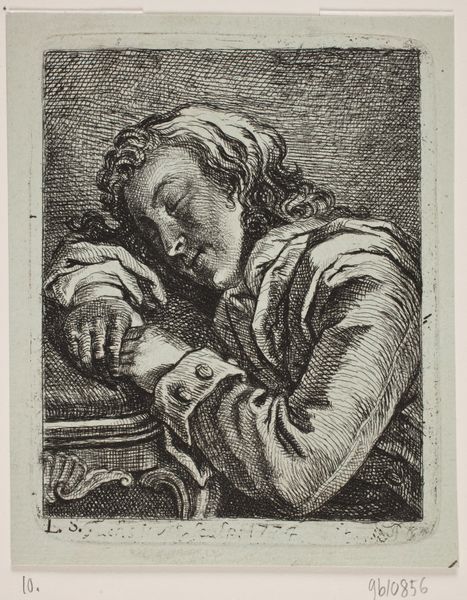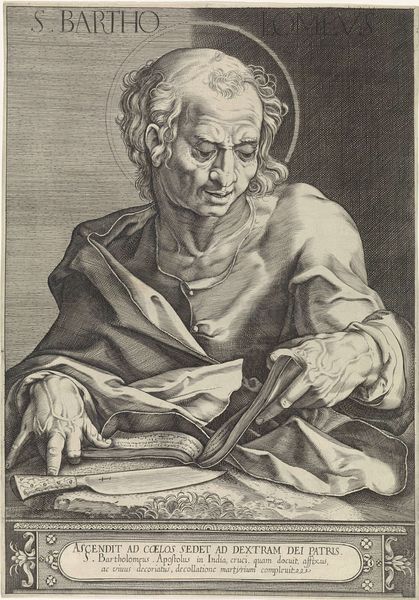
drawing, print, intaglio, engraving
#
portrait
#
pencil drawn
#
drawing
#
aged paper
#
toned paper
#
light pencil work
#
dutch-golden-age
# print
#
intaglio
#
pencil sketch
#
old engraving style
#
personal sketchbook
#
pencil drawing
#
sketchbook drawing
#
pencil work
#
engraving
Dimensions: height 88 mm, width 73 mm
Copyright: Rijks Museum: Open Domain
J. van Haeften made this small etching of a man filling a pipe, sometime in the 17th or 18th century. The etching is a study of labour. It shows the process of preparing tobacco, making it ready for smoking in a clay pipe. At the time it was made, the Netherlands dominated the trade in tobacco, which grew in the Dutch colony of Suriname. As tobacco became more popular, the Dutch became experts in processing it for pipes. Here, we see someone teasing the leaves of tobacco. The tools are rudimentary. The man's concentration is paramount. Smoking went hand in hand with the social life of taverns and inns. Etchings and prints like this would have served as advertisements for such establishments. To understand the context of this etching, we might consult trade records, colonial archives, and social histories of leisure and addiction. We could also consider the biographies of printmakers like van Haeften and the institutional role of workshops in the creation and circulation of images.
Comments
No comments
Be the first to comment and join the conversation on the ultimate creative platform.

